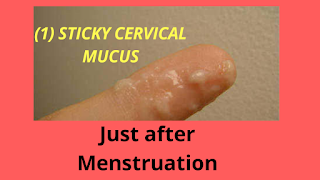HOW TO SOLVE GENITAL SKIN TAG
How many of you have a genital skin infection but you're either afraid or shy of telling your Dr
Now check this
HOW TO GET RID OF GENITAL SKIN TAG AT HOME
What is a skin tag? Skin tags are benign growths that usually appear in areas where your skin has folds. Skin tags are also called acrochordons. They occur in at least 25 percent of adults. These growths are typically brown or beige, and are attached to the rest of your skin by a thin stalk. Skin tags are commonly found on eyelids, armpits, neck, and your genital areas. Genital skin tags are benign, but some people want them removed because of how they look. They can also look similar to sexually transmitted infections, like genital warts.
What are the symptoms of genital skin tags?
Genital skin tags aren’t painful unless they are pulled on or aggravated. Unlike genital warts, which appear flush against your skin, skin tags are connected to your skin by a short stalk. Skin tags won’t bleed unless you’re trying to remove them, but they may itch. Sometimes they appear in clusters or patterns on your skin. You may not notice a skin tag when it first forms, because often they are the same color or only slightly darker than your natural skin tone.
What causes genital skin tags?
Though the cause of skin tags isn’t clear, researchers believe that irritation from clothing and rubbing against other areas of skin can contribute to their formation. Since your genitals are an area of your body made up of multiple folds of skin, it’s not surprising that skin tags form there. Genital skin tags can’t be transmitted through sex with another person that has them. They aren’t contagious. In some cases, having a skin tag can be an early indication that you have a metabolic syndrome, such as diabetes. Skin tags are more likely to occur in people that are obese, or people with a family history of skin tags.
How are genital skin tags diagnosed?
Whenever you notice a new bump or mark on your genitals, it’s a good idea to see your doctor to confirm what it is. There’s no reason to risk transmitting a sexually transmitted infection to another person, or to live with an STI that could be easily treated. Women should make an appointment with an OB/GYN or general practitioner. Men can make an appointment with their regular doctor, although skin tags on the penis are somewhat rare. At the appointment, you will be asked some questions about your sexual activity and family history. If you have had a new sexual partner recently, you may be asked if you want to undergo a blood test to check for other STIs. After finding out if there are other risk factors at play, your doctor will leave the room while you get undressed. Upon returning, the doctor will examine the bump to tell you if it’s a benign skin tag or something else that requires further testing. You may also be advised on options to remove the bump if you’re interested.
How are genital skin tags treated?
Some people try to treat skin tags at home using remedies like tea tree oil, baking soda, apple cider vinegar, and castor oil to weaken the stalk of the skin tag. These remedies supposedly weaken the stalk that attaches your skin tag, claiming to make it easier to pull off. But with genital skin tags, it’s important to be extremely careful with any home remedy that you attempt to use. This is especially true when dealing with the sensitive skin in this area of your body. These remedies have not yet been proven by clinical research. Using a home remedy to get rid of genital skin tags can even result in a chemical burn if it’s not done carefully. If you want to remove your skin tags, talk with your doctor. A dermatologist, OB/GYN, or general practitioner can remove a skin tag for you in their office. They can apply a local anesthesia so that you don’t feel discomfort during the removal process. Your doctor may use forceps dipped in liquid nitrogen to quickly grasp the stalk of a skin tag and remove it from your body. This procedure is called cryotherapy — removal by freezing. Surgical excision (removal with a scalpel), and cauterization (removal by burning) are also possible treatment methods. In the case of multiple skin tags, you may be able to get all of them removed at once, or you may have to return to your doctor for a repeat treatment. Having skin tags removed is an outpatient procedure with little to no recovery time required. The risk to you is minimal and the chance of getting an infection is not likely. But the skin tag may appear again in the same place if your skin gets rubbed against or irritated again. Note It’s a good idea to get your skin tag looked at by a doctor to confirm that it isn’t a symptom of a more serious condition. If your skin tags bother you, having them removed by your doctor is a simple and low-risk elective procedure.
Hence the procedure I am going to give now should never I REPEAT SHOULD NEVER be done on your own Tell your Dr about your skin tag for him or her to confirm that it is actually skin and that you should go ahead with the recipe
How to remove genital skin tags
1) Take equal amount of ACV and water in a table spoon and mix together
2). with a cotton ball apply on affected area morning evening
3) Repeat procedure 1 and with half the quantity of water but the same ACV.
4). REPEAT PROCEDURE 1 AND 2 with no water and only ACV
NOTE.OUR AIM OF STARTING WITH WATER AND THEN HALF QUANTITY IS TO AVOID BURNING BECAUSE THIS AREA IS SO SENSITIVE AND ACV MAY BURN YOU, HENCE IF YOU CAN'T WITHSTAND THE PAINS FROM STEP 1 DON'T CONTINUE.
YOU MUST TRIM DOWN ANY PUBIC HAIR AND START THE PROCEDURE ONLY AFTER A DAY FROM TO THE SALON.
ALWAYS TALK WITH YOUR DR IN THE PROCESS IF SOMETHING GOES WRONG Thanks very much for following, may God bless you richly and grant healing to all suffering from terrible diseases. Please don't forget to follow us on YouTube, Facebook, Instagram and Twitter @check your health and maintain your wealth.


Comments
Post a Comment